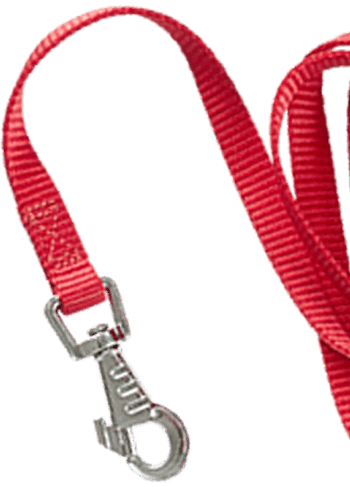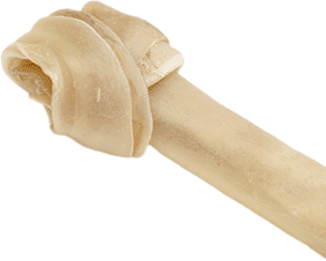


Deciding to get a puppy is an easy choice. They’re playful and adorable, so they make a great addition to any family. But choosing the right dog breed for your family can be challenging.
Before bringing home that new puppy, you should carefully research and compare different dog breeds, their personalities, potential health problems, affinity towards children, and more.
And your search may eventually lead you to deciding between the coveted Siberian Husky and the ever-popular Labrador Retriever.
These two breeds make the cutest puppies ever, and they are loyal and energetic dogs. But, while there are similarities, there are also a lot of differences. Let’s explore these differences so you can make an informed decision about the next puppy in your life.
When you look at a Siberian Husky with its long, thick coat, thick tail, and erect ears, you can clearly see it has a Northern heritage. The Siberian Husky originated in Northeast Asia, where the Chukchi people first bred them. The Chukchi kept Siberian Huskies as endurance sled dogs and companion dogs.
The original Siberian Huskies could haul light loads through freezing temperatures without getting exhausted or wasting too much energy. The Chukchi people treasured these sled dogs, and they tried to keep the Siberian Huskies as purebreds for years.
In the early 1900s, people started entering Siberian Huskies in sled races, which they continuously won. But the defining moment for this breed’s popularity came about in 1925 when Leonhard Seppala led a group of Siberian Huskies to deliver a serum against diphtheria in Nome, Alaska.
The Huskies went on for 658 miles, which made them immensely popular in the media. In fact, the lead dog, Balto, has a statue in New York City’s Central Park.
Today, the Siberian Husky is still well-loved and continuously ranks 21st as the most popular dog in the country. The American Kennel Club (AKC) recognized the Siberian Husky as a breed in 1930 and categorized it in the Working Group of dogs.
Working group dogs are adept at assisting people in everyday jobs, such as pulling sleds. The Husky is in a group with many other powerful dogs, including Doberman Pinschers, Great Danes, and more.
The Siberian Husky has a distinct look with a medium size and a friendly personality. Their bright blue or brown eye color makes their appearance unique.
They are vigorous animals that love being around other dogs and humans. Those who choose to have Siberian Huskies should ensure that their pet gets enough exercise to expend their immense energy.
As one of the most popular dogs for 30 years in a row, the Labrador Retriever was originally bred as a traditional waterdog in Newfoundland. In the early 1800s, English nobles visiting Canada spotted these dogs and found them appealing. So, they returned to their home country with Labradors.
While using the Labrador as a retrieving and hunting breed, the British breeders refined the dogs’ traits in the 19th century, creating the modern-day Labrador Retriever.
The English Kennel Club recognized the Labrador as a breed in 1903, while the American Kennel Club (AKC) recognized them as a breed in 1917 and categorized them in the Sporting Group.
Sporting Group dog breeds are exceptional companions. They work with hunters to locate and retrieve other animals. The Labrador Retriever is in this group with other popular dog breeds, such as Spaniels, English Setters, and more.
With its short, water-resistant coat, the Labrador Retriever is an amazingly intelligent dog that can serve different purposes. Today, you’ll find Labradors as therapy dogs, service dogs, and more.
This breed’s calm and playful temperament makes it the perfect pet for families with children. And it is suited to an active lifestyle. Labrador Retrievers love learning, pleasing their beloved humans, and swimming, too.
Now that we know where Siberian Huskies and Labrador Retrievers come from let’s dive into a detailed comparison of the two dog breeds.
At first sight, you will immediately notice that there is a difference in appearance between the Siberian Husky and the Labrador. They are different in terms of their size, weight, distinctive colors, and markings.
Look at a Siberian Husky and a Labrador Retriever walking, and you’ll instantly see a difference! You’ll notice that the Siberian Husky is much smaller, characterized by a medium build and lighter weight. A Husky looks like it’s walking effortlessly, and it can reach high speeds when running.
Siberian Husky males are between 21 and 23.5 inches, while females are between 20 and 22 inches. The male’s ideal weight is between 45 to 60 pounds, while the female is much smaller at 35 to 50 pounds.
All in all, the Husky is an adorable dog breed, perfect for people with a small apartment who don’t have room for a large dog.
Labrador Retrievers are large, sturdy dogs. They are well-balanced and have broad heads, making them look completely different from the Huskies. A male Labrador is between 22.5 to 24.5 inches in height, while the female is 21.5 to 23.5 inches.
Both sexes weigh far more than any Siberian Husky, with the male Labrador at an ideal weight between 65 to 80 pounds and the female at 55 to 70 pounds.
When comparing a Siberian Husky vs. Labrador, you also notice that their colors and markings are entirely different. According to the American Kennel Club, acceptable colors for a Siberian are as follows:
A Siberian Husky also has a soft, thick coat with saddle-back markings.
Labrador Retrievers have less color variation. Their short coats can be black, chocolate, and yellow, with white markings only.
If you’re concerned about having dog hair around your house, you might wonder which dog breed sheds less: Siberian Husky vs. Labrador?
At first glance, it might seem like both the sled dog and the retriever are shedders. And that’s true, but the way they shed is different.
The Siberian Husky has a double coat of medium length. The thick undercoat protects it from the cold, and the topcoat is lighter. This dog breed has two shedding seasons: one in the spring to shed the winter coat and one in late fall to shed its spring coat.
It’s essential to groom Huskies weekly, but you should do it more frequently during these two major seasons to help with the shedding.
Brush the undercoat and topcoat weekly to remove dead hair and to keep the Husky’s skin in good condition. You can use a pin brush and a metal comb to brush their coats, and you should trim their nails regularly to avoid foot problems.
In general, Siberian Huskies are self-cleaning, so they don’t need a lot of baths, but you can clean them as you see fit.
Labrador Retrievers have a shorter coat, but similar to the Husky, it’s a double coat. The undercoat is thick and soft to protect them from the cold. It’s also water-repellant, which protects Labrador Retrievers from the water. Their topcoat is light and short.
Labradors also have two major shedding seasons per year, but a Siberian Husky sheds far more than a Labrador simply in terms of sheer volume and frequency. It’s essential to groom both breeds weekly and even more often during their shedding season.
Use a rubber curry comb and shedding blade to brush their fur and remove the hair. Try not to use an undercoat rake because the Labrador’s coat is short, and the rake won’t grab the fur properly. Brush their teeth and trim their nails frequently, so they are clean and comfortable.
Overall, both Labradors and Huskies are notorious shedders, but Huskies shed a bit more regularly than Huskies. Neither of these breeds are good candidates for shaving, however, because they’re double-coats and they need both layers for healthy body temperature regulation.
People have different lifestyles, and when you get a dog, it should fit into your lifestyle. Otherwise, caring for your pet may become challenging. This is why it’s important to understand the dog’s personality and temperament before deciding which one to get.
It’s especially crucial for a first-time dog owner—you can get overwhelmed if the animal’s temperament doesn’t work well with the way you live your life. Experienced owners considering getting multiple dogs should also understand their personalities and see if the dogs get along with each other and other pets.
When it comes to a Siberian Husky vs. Labrador, there are a few personality differences you should know.
A Siberian Husky is a dog bred for the outdoors. It’s a high-energy animal that needs a lot of exercise. Because they’re considered a working breed, they do well when they have a task to perform—having a purpose stimulates them both mentally and physically and bonds them to their owners.
Siberian Huskies love running, and they won’t miss an opportunity to do so. They’re also quite vocal and can bark a lot at any stimulant, whether it’s a new human, other pets, or just birds they see outside.
All in all, Siberian Huskies need both physical and mental stimulation to be happy and fulfilled, so they’re suited to an active family lifestyle.
Labrador Retrievers are similar to Huskies in that they are also high-energy dogs, but they like to express that energy in different ways. They are large dogs that love being around their humans.
They’re a bit calmer than Siberian Huskies, and they don’t bark as much, especially without reason. They enjoy daily exercise and love to play fetch. They’re also highly intelligent and easily trained, so you can teach them many commands.
Their personality differs from Huskies. Labradors are more obedient. They also love being in any weather and environment, especially water, and they can serve a variety of roles, such as becoming a therapy dog, companion dog, service dog, and more.
Both dogs are extremely friendly, but which one is more social: the Siberian Husky vs. Labrador?
According to the American Kennel Club, both breeds are very open to strangers and love approaching them for pets and treats. They’re also exceptionally playful and love hanging out with their humans.
But, the Siberian Husky is a bit less adaptable to new situations and environments than the Labrador Retriever. This means that the Siberian Husky needs a more stable home environment. Ultimately, if you like to take many trips or move homes frequently, a Labrador would be a better dog for you.
Labrador Retrievers are incredibly loyal, and they love staying by their owner’s side. But don’t count on them for everyday protection. Because they love strangers so much, both Labradors and Siberian Huskies don’t make excellent guard dogs.
If you have a family, especially children and other pets, you might wonder which dog is the right one for you. Both breeds are great with families, children, and other animals too.
With high energy levels, they can play with anyone. But there are some differences in their approach toward children and other dogs that both first-time owners and experienced owners should consider.
Siberian Huskies are good with children, but you should be there to supervise. Just like any other dog breed, kids shouldn’t be left alone.
On the other hand, Labrador Retrievers are excellent with children, but they still need supervision. Labradors don’t bark a lot, and they have fun in play sessions in a large yard, so they’re family favorites.
Many dog-friendly households don’t just have one dog, but they like to have multiple breeds in the house. Both Labradors and Huskies tend to be extremely dog-friendly and love all other breeds of dogs. You can have either breed in the same household as an American Bulldog, for example, and they’ll get along well.
Any dog breed needs consistent training to learn good behavior and manners, both around people and other animals. But some breeds are more challenging to train than others. In the case of a Husky vs. Labrador, both breeds are trainable, but there are differences in the pace of training and the level of intelligence.
A Siberian Husky needs to be socialized and trained early on while it’s a puppy. But training Husky pups takes dedication, time, and patience. They’re easily distracted and love to run and exercise, so establishing rules is very important.
Basically, don’t expect it to learn quickly. According to the American Kennel Association, a Siberian Husky’s trainability is rated as three out of five.
A Labrador Retriever is extremely trainable. Their incredible intelligence and desire to please their humans make Lab pups a joy to work with and train.
You should start training a Labrador puppy early as the age of 7 weeks to 4 months is crucial to its development and socialization. During that period, the puppy learns various behaviors and manners that will stay with it throughout its life.
You should, of course, work with reputable breeders and trainers and follow up with at-home training to ensure that your Lab puppy grows into an exemplary pet and companion.
Understanding the health problems of a Siberian Husky vs. a Labrador Retriever is also crucial when comparing these dogs.
Huskies are an extremely healthy breed but can have a predisposition toward some problems, such as juvenile cataracts and hip dysplasia. That’s why it’s crucial to work with a reputable breeder and to take your Husky to get a health screening to check whether they might have these problems.
Labradors are also generally healthy dogs, but they have a predisposition toward a few more problems than Huskies. Generally, new owners of Labradors should know that they can have elbow dysplasia, tricuspid valve dysplasia, hip dysplasia, ear infections, progressive retinal atrophy, heart disorders, and more.
But, you can avoid such problems if you have regular health screenings for your Labrador. It’s also important to buy your puppy from a reputable breeder who ensures your dog is perfectly healthy.
Keeping your pet healthy and well-fed is a priority for dog owners. Every breed has different needs for nutrition and feeding, and so do Siberian Huskies and Labrador Retrievers.
You should feed a Siberian Husky high-quality dog food that ensures their coat and skin health. Based on how much activity the Husky gets, you should adjust their protein level, but they generally need around 32% protein in their food. Be careful not to overfeed them and monitor their weight, so they don’t become overweight.
Labrador Retrievers also require high-quality food, and the amount should be adjusted based on their weight. Some Labradors are prone to obesity, so you should closely monitor their weight and make sure they get enough exercise every day.
You should not free-feed any of these breeds because they might overeat, which can lead to health problems.
According to the American Kennel Club, a Husky lives a few years longer than the Labrador. When talking about the lifespan of a Husky vs. Labrador, a Husky lives 12 to 14 years, while a Labrador lives between 10 to 12 years.
You can improve their life expectancy and quality of life through a balanced diet, a stress-free environment, and regular exercise. However, don’t over-exercise any of these breeds, as they can experience exercise-induced collapse.
Both the Siberian Husky and the Labrador Retriever make amazing pets. Dogs of either breed love to exercise and are loyal to their owners. So whichever breed you choose, you can’t go wrong. The Husky is a beautiful breed with very few health problems. The Labrador makes a loving companion, plus, as a Lab owner, you can feel proud with all the tricks they can learn.
If you opt for a Labrador, look for a beautiful and well-mannered pet from Snowy Pines White Labs. The Snowy Pines White Labradors are genetically pure, well-trained, and healthy—they’re also happy pups as they get their start in the heart of the Ozark Mountains, where they can roam free.
Every Labrador is trained to be a family pet, and you’ll be grateful you got your Lab puppy from Snowy Pines. Look through our puppies now and choose your next pet!